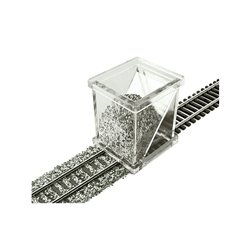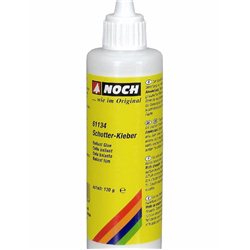When it comes to hobby knives, the expensive part of the knife is often the bits surrounding the blade and not the...
No products
Product successfully added to your shopping cart
There are 0 items in your cart. There is 1 item in your cart.
Search Tips
Christmas and New Year
We are dispatching orders every weekday apart from Christmas Day, Boxing Day and New Year's Day.
If you order is time critical, select next day delivery at checkout.
The shop in Sandown is closed from 25th December, reopening on 30th December.
How can I safely ballast points?
Ballasting points can be a fearsome prospect for some modellers as the consequences of getting it wrong can be a stuck point that might have to be removed. The means by which a modeller will choose to ballast their layout is a matter of individual choice. Some may use a Ballast spreader or similar ballasting aid, others may choose to spread by some other means and then secure the ballast in place with a suitable adhesive, often PVA glue or its derivatives.
In principle, the process for ballasting points is generally similar for all track sections, with the exception that care needs to be exercised in and around the point control mechanism itself. The points mechanism will sit between two sleepers and no glue must be applied here as it will likely result in the points being locked to one side or the other. For all other sleepers apply the glue as normal and then sprinkle the ballast to ensure coverage as required. Throughout the process, ensure that the points mechanism has full function, as it is not uncommon for ballast granules to become caught within the mechanism. This will hinder the function of the points by preventing the flow of current. A dry brush or toothpick can be used to remove any offending granules. At the same time, run a finger or brush between the rails to remove any loose granules from sitting on the sleepers. It is also a good idea to run a cloth or track rubber over the rails to ensure no glue deposits remain on top of the tracks. As special care has to be applied around the points it is sometimes useful to water down the PVA glue to be used in this area. This will allow a little more time for the ballast to dry giving the modeller a greater window to rectify any issues. Once any final clean-up has been applied allow a good 12 hours for the PVA glue to thoroughly cure before operating trains on the track.
Click here to receive the tips weekly in your mailbox. You can unsubscribe at any time.









